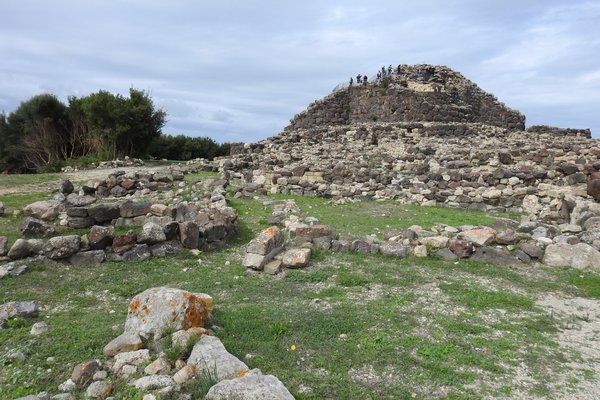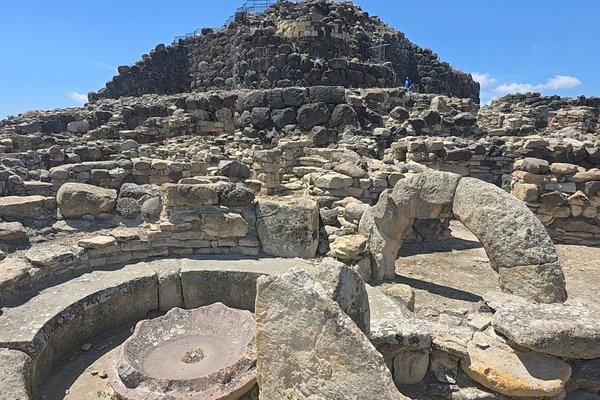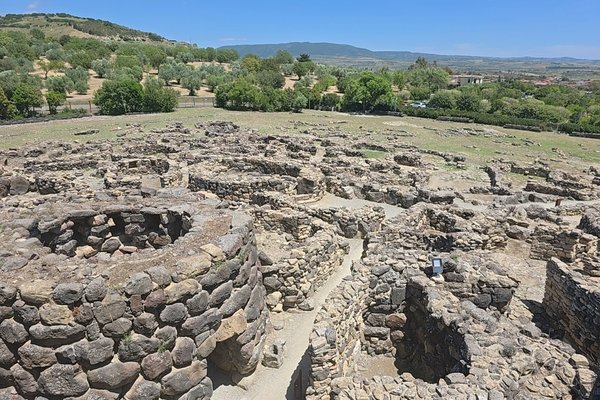Italy
Su Nuraxi di Barumini
Su Nuraxi di Barumini is the most important Bronze Age defensive structure of Sardinia.
The prehistoric settlement was centered around a three-story, megalithic 'nuraghe' tower that was built around 1500 BCE. The Nuraghi, originally isolated towers in prominent settings, were built to house single families or clans, but evolved into a more complex settlement for social and defensive reasons.
Community Perspective: Don’t look at it only from afar, but take the guided visit that is included with the ticket, as it will take you in and on the structure and add a lot of background info to the ‘heap of stones’. Ilya has recommended a few other Nuraghi that are worth visiting.
Site Info
Official Information
- Full Name
- Su Nuraxi di Barumini (ID: 833)
- Country
- Italy
- Status
-
Inscribed 1997
Site history
History of Su Nuraxi di Barumini
- 1997: Inscribed
- Inscribed
- Type
- Cultural
- Criteria
- i
- iii
- iv
Links
- UNESCO
- whc.unesco.org
- Official
-
- fondazionebarumini.it — Fondazione Barumini
- Related
-
- sarnow.com — Nuraghi: charm in Sardinia
All Links
UNESCO.org
- whc.unesco.org — whc.unesco.org/
Official Website
- fondazionebarumini.it — Fondazione Barumini
Related Resources
- sarnow.com — Nuraghi: charm in Sardinia
Community Information
- Community Category
- Archaeological site: Prehistoric
Travel Information
Guided Tour Only
Recent Connections
-
Perfect Inscriptions
1997 -
Located in a TCC Territory
Sardinia -
Guided Tour Only
""Su Nuraxi" archaeological area, "Casa…
Connections of Su Nuraxi di Barumini
- Trivia
- History
-
-
Bronze Age
Crit iii: "The Su Nuraxi di Barumini bears exceptional testimony to the Bronze Age civilisation of Sardinia" (OUV) -
Megalithism
"unique megalithic defensive structures" (OUV)
-
- World Heritage Process
-
-
WHC locations
Naples (1997) -
Perfect Inscriptions
1997
-
- Religion and Belief
-
-
Atlantis
By the Italian journalist Sergio Frau (Wiki)See en.wikipedia.org
-
- Constructions
- WHS on Other Lists
-
-
Located in a TCC Territory
Sardinia
-
- Timeline
-
-
Built in the 2nd Millennium BC
"It is generally accepted that the central tower at Barumini dates from the later 2nd millennium BC." (AB ev)
-
- Visiting conditions
-
-
Guided Tour Only
""Su Nuraxi" archaeological area, "Casa Zapata" Museum and the Centre "Giovanni Lilliu" can be visited through a guided tour included in the price of the ticket." (official website, Nov 2023)
-
- WHS Names
-
-
Untranslated Toponyms
"The nuraghe or nurhag is the main type of ancient megalithic edifice found in Sardinia, developed during the Nuragic Age between 1900 and 730 B.C....plural: Logudorese Sardinian nuraghes, Campidanese Sardinian nuraxis [nuˈɾaʒizi], Italian nuraghi) ....An etymological theory suggests a Proto-Basque origin by the term *nur (stone) with the common -ak plural ending;[6] the Paleo-Sardinian suffix -ake is also found in some Indo-European languages such as Latin and Greek. Another possible explanation is that the term nuraghe came from the name of the Iberian mythological hero Norax and the root *nur would be an adaptation of the Indo-European root *nor" " (WikiSee en.wikipedia.org
-
News
No news.
Recent Visitors
Visitors of Su Nuraxi di Barumini
- Alexander Barabanov
- alicemears
- A. Mehmet Haksever
- Ana Lozano
- Anna Wludarska
- Argo
- Astraftis
- Atila Ege
- Axel Hansson
- Bernard Joseph Esposo Guerrero
- Bin
- Bram de Bruin
- Bropyk
- CeeMon
- chenqtao
- Cheryl
- Christian Wagner
- Clyde
- Dani Cyr
- Daniela Hohmann
- Daniel Chazad
- Dimitar Krastev
- Dwight Zehuan Xiao
- Elia Vettorato
- Els Slots
- Emilia
- Emili Xaus
- Eva Kisgyorgy
- Federico P.
- Filip Murlak
- Flexiear
- Gernot
- grimloch
- Hadrianus
- H Beswick
- Hubert
- Iain Jackson
- Ilya Burlak
- Ivan Rucek
- Jakob F.
- Jawnbeary
- Jeanne OGrady
- Jens
- JobStopar
- John Smaranda
- Jonas Hagung
- Jonas Kremer
- Joyce van Soest
- Karito Vies
- Krijn
- Kurt Lauer
- La Concy
- Lara Adler
- Laurine
- Loic Pedras
- Luis Filipe Gaspar
- Lukasz Palczewski
- Maciej Gil
- Manuelfunk
- Marinemajor
- Martina Rúčková
- MAURO PODDA PANI
- MaxHeAnouBen
- Michael Novins
- Mikko
- Mikko Syrjä
- Milan Jirasek
- Monica Tasciotti
- nan
- Nasebaer
- Niall Sclater
- Nihal Ege
- Patrik_globe
- PeterH
- Peter Lööv
- Philipp Leu
- Philipp Peterer
- Piotr Wasil
- Randi Thomsen
- reddargon
- Roger Ourset
- Sergio Arjona
- SirLoydd
- Slavi
- Stanislaw Warwas
- Svein Elias
- Szucs Tamas
- Tarquinio_Superbo
- Tevity
- thisispivi
- Thomas Buechler
- Timothy C Easton
- tony0001
- triath
- Tsunami
- Twobaconsandaboston
- Vanessa Buechler
- V&M
- Walter
- Wojciech Fedoruk
- Xiquinho Silva
- Yevhen Ivanovych
- Zizmondka
- Zoë Sheng
Community Reviews
Show full reviewsTwobaconsandaboston
Su Nuraxi di Barumini - The Nuraghi of Sardinia
Su Nuraxi di Barumini (Inscribed)
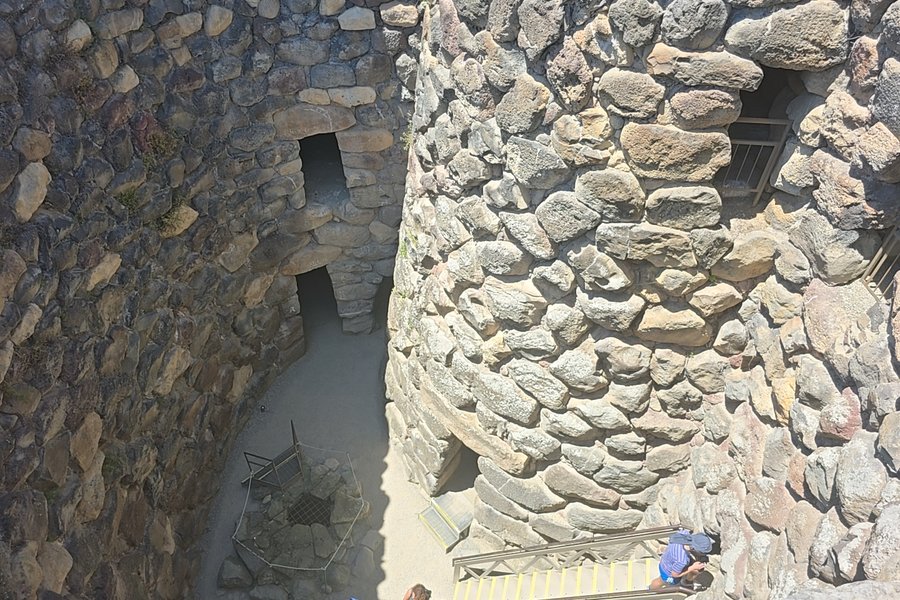
Hiring a car to visit this site is your best option for a number of reasons. Public Transport is sporadic, organised tours are restrictive with times and there are numerous other sites of significance in the area that can be explored including other Nuraghi and Domus de Janas sites (Tentative UNESCO listed for potential inscription in 2025). We were based in Cagliari and hired a car for the day visiting this site as well as 2 other Nuraghi and 3 Domus de Janas sites making it a very worthwhile trip.
This particular site cannot be visited without an organised tour guide, which is included in the price and there were a number of languages of the guides at the time. Having arrived at the site around midday in mid-June 2025, we only had to wait about 10 minutes for our tour guide and tour. The tour lasts for about 20 - 30 minutes which includes a history of the site and points of interest both outside the main defensive towers but inside as well. Climbing into the towers is not difficult with steps and platforms, however there are narrow entries through the towers and stonework which some may find challenging. The tour takes you to the central location within the defensive tower from which you can then freely explore the area and other towers. There are no other information signs in the facility itself (not needed), with the tour guide remaining in the area to answer any questions if needed. …
Keep reading 0 comments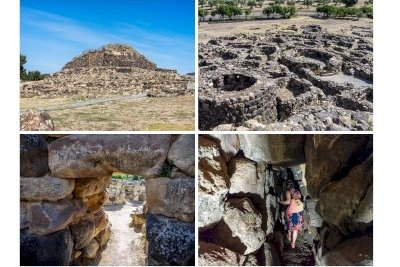
I visited Su Nuraxi in September of 2023 on a self-driven tour around Sardinia. Due to the structure of my itinerary, Su Nuraxi was the fifth Nuragic site that I stopped by, so I already was well familiar with the key information points regarding the ancient civilization and its archetypal edifice. Because of that, I did not mind going on an Italian-language tour, starting within minutes of my arrival, as opposed to waiting for the next English-language tour. That I speak and understand Italian - passably, not fluently - obviously helped, but the relative familiarity with the subject helped even more.
The guide-led timed entry at Su Nuraxi - every half hour; the only nuraghe visited on this trip where we could not roam free - is partially justified by the fact that the interior parts of Su Nuraxi that you can step into are dark and small to the point of being claustrophobic; there are three narrow passages where traffic has to be limited to one person at a time in one direction. In fact, for all of its overall size and supposed exemplifying features, I did not find Su Nuraxi to be the most impressive of the nuraghi that I've seen specifically on the strength of its interior space constraints.
When you linger on elevated viewpoints of the central complex, you start to recognize that what looked from the ground like piles of stones are actually visible outlines of outer structures. Once the guide leads you …
Keep reading 0 comments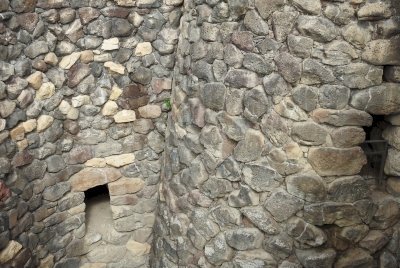
I finally gave up on public transport in Corsica & Sardinia at Barumini: there's no way to do it on a day trip by bus or train. Not that the experience of renting a car for a day was such a pleasure: I found the Hertz office at Cagliari-Elmas airport understaffed at 9 am, their printer did not work so they had to write my contract by hand (oh, I so wish for a full digital transformation of car rental companies) and the directions where to pick up my car were immensely vague. I guess the lady behind the desk had lost her sense of direction because of the stress. Together with a German tourist, I went on a thorough search for our cars, which we finally spotted after 20 minutes using a high vantage point. It turned out that there is an additional parking lot just in the shadow of the large parking garage.
All these delays meant that I could throw overboard the plans that I had to visit another site or two beside Su Nuraxi di Barumini. If you have your own wheels and a full day to spare from Cagliari, you could easily extend a trip to Barumini to the Sulcis Iglesiente TWHS and the Temple of Antas.
Fortunately, the visitor experience at Su Nuraxi di Barumini is exemplary. There’s free parking and a (book) shop. The 14 EUR entrance fee is steep, but in addition to entry to two museums in town it …
Keep reading 0 comments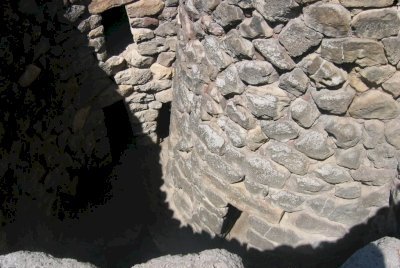
September 2009 - with my best schoolmates we decided to do an one week trip to Sardegna. After 2 days in Cagliari we rented a car and planned to drive around the Island. I had to pesuade them to go first up north to visit Sardegnas only whs. A pile of stones when looking from outside. But we did a tour going into the beehives, which was quite impressive. However, after the visit we drove back to the shore. An amazing place I can advise: Piscinas dunes on the westcoast. A memorable experience and the best we have seen on the island.
Keep reading 0 comments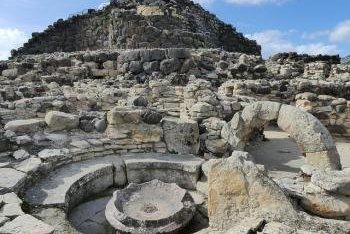
I visited this WHS in March 2017. Having visited most of the 'beehive' sites on the list and knowing that the cost of this visit would be quite steep at 11 euros per person, I had low expectations.
Upon arriving at the Su Nuraxi parking lot, just outside the village of Barumini, I immediately spotted the highest nuragic structure and what seemed like circular structures which are quite similar to the ones of Choirokoitia in Cyprus. So to actually 'see' the site you can stroll by the street and view the nuragic site with the 15th century castle remains of Las Plassas in the background.
However, you'd be missing out on the very interesting guided walk through the nuragic complex and most importantly inside the nuragic 'fortress' which offers an unbeatable panoramic view of the whole site from the highest tower. Moreover, included in the entrance fee to this site are visits to Palazzo Zapata, which houses a limestone (whitish) nuraghe and several important remains found in Su Nuraxi and Centro Giovanni Lilliu which has an interesting collection of excavation photos and 3D models. The most important remain in Palazzo Zapata is the limestone model of a nuragic tower which was found in 'hut' 80 as it gives an idea of how the upper part of the towers must have looked like. It also helps to appreciate the signifance of the numbered basalt stones scattered around the site's perimeter which most probably belong to the uper parts of the towers.
…
Keep reading 0 comments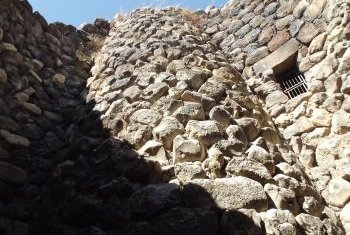
The Su Naraghi near Barumini have the distiction of forming one of the largest and most complete of these strange villages. The dwellings are conical in shape and constructed of dry stone boulders carefully wedged together.
The WHS is stuated 20 minutes walk from the village of Barumini. Although there are infrequent direct buses to and from Cagliari, I travelled to Barumini by train from Cagliari Republicca station to Isili on the Ferrovia de Sardegna railway. Then I caught a bus from Isili to Barumini.
Keep reading 0 comments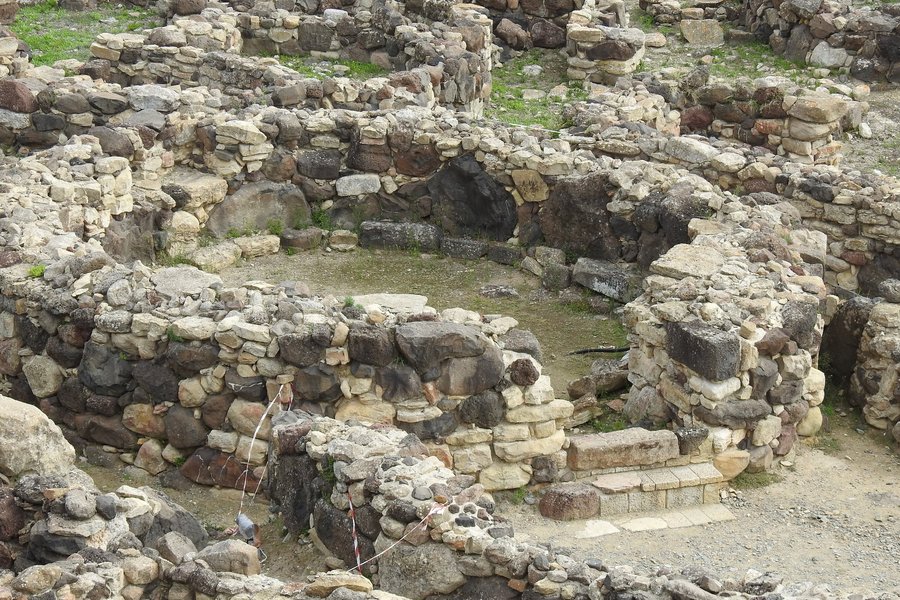
The site is very impressive and large. I was surprised one could go in, but this was only possible with a guide. There was no English speaking guide available, which made it hard to understand what we saw. With a little English book it was possible to understand some of it.
It was not difficult to find the site. I found it very worthwile visiting and would certainly recommend this to anyone visiting Sardinia. However the countryside was a bit disappointing...
Keep reading 0 comments
